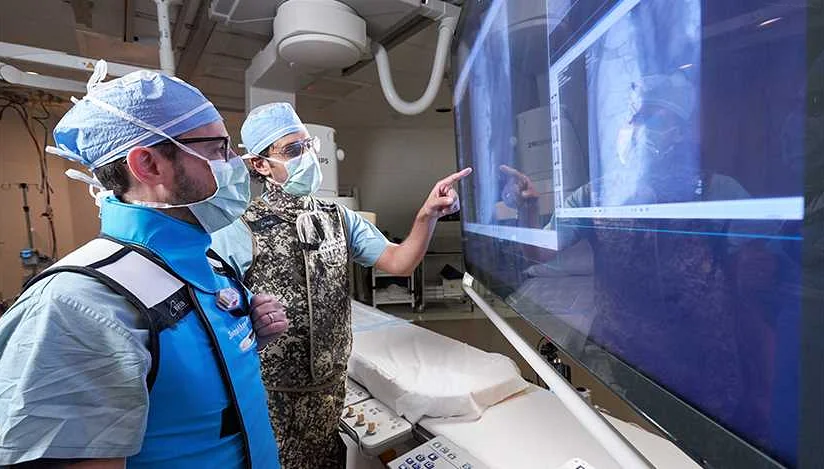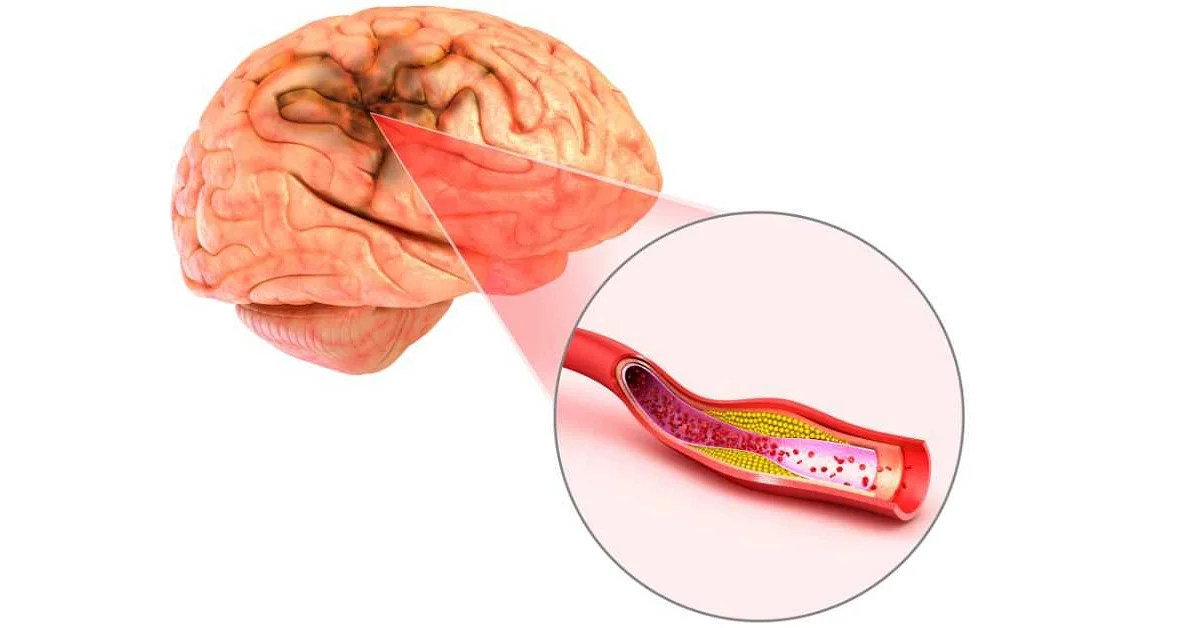How to Recognize a Dangerous Blood Clot: 20 Dangerous Signs Named by a Neurosurgeon
Содержимое
Learn how to identify the signs of a dangerous blood clot with the help of a neurosurgeon who has identified 20 warning signs. Protect yourself by recognizing the symptoms early and seeking medical attention. Stay informed and stay safe.
A blood clot can have serious consequences if not recognized and treated promptly. It occurs when blood coagulates and forms a clump, obstructing the normal blood flow. This can happen in any part of the body and may lead to life-threatening complications. It is essential to be aware of the signs and symptoms of a dangerous blood clot, as early intervention can make a significant difference in the outcome.
A neurosurgeon, a specialist trained in diagnosing and treating conditions affecting the brain and spine, can provide valuable insights into identifying the warning signs of a dangerous blood clot. These signs may vary depending on the location of the clot in the body, but there are some common indicators that should not be ignored.
One of the classic symptoms of a dangerous blood clot is sudden swelling, redness, and warmth in the affected area. This usually occurs in the arms or legs and should not be dismissed as a minor issue. Additionally, persistent pain or tenderness in a specific part of the body, along with a heavy or throbbing sensation, may indicate the presence of a blood clot.
Other potential signs of a dangerous blood clot include unexplained coughing, shortness of breath, and chest pain. These symptoms could suggest a blood clot in the lungs, which is a medical emergency requiring immediate attention. Furthermore, sudden, severe headaches, dizziness, or loss of coordination may indicate a blood clot in the brain, emphasizing the need for urgent medical intervention.
Recognize a Dangerous Blood Clot

A blood clot, also known as a thrombosis, can be a serious and potentially life-threatening medical condition. It occurs when a blood vessel becomes blocked, preventing blood from flowing properly. Recognizing the signs and symptoms of a dangerous blood clot is crucial for early detection and prompt treatment. Here are 20 dangerous signs to watch out for:
- Sudden pain or swelling in the affected leg or arm
- Warmth and redness over the affected area
- Tenderness or pain when touching the affected area
- Heavy ache or pressure in the affected limb
- Noticeable change in skin color, such as pale or bluish discoloration
- Veins that appear enlarged or bulging
- Difficulty moving the affected limb
- Weakness or numbness in the affected limb
- Shortness of breath or difficulty breathing
- Rapid heart rate
- Sharp chest pain that worsens with deep breaths
- Coughing up blood
- Sudden severe headache
- Dizziness or fainting
- Blurred vision or loss of vision in one eye
- Speech difficulties or slurred speech
- Seizures
- Abdominal pain, nausea, or vomiting
- Unexplained bruises or bleeding
- Confusion or changes in mental status
If you experience any of these signs or symptoms, it is important to seek medical attention immediately. A healthcare professional can perform diagnostic tests to determine if a blood clot is present and provide appropriate treatment. Remember, early detection and intervention can greatly reduce the risk of complications from a dangerous blood clot.
Key Symptoms to Watch Out For

If you suspect that you may have a dangerous blood clot, it is important to be aware of the key symptoms. Recognizing these symptoms early on can greatly increase your chances of receiving prompt medical attention and treatment. Here are some key symptoms to watch out for:
- Sudden and severe chest pain
- Shortness of breath or difficulty breathing
- Swelling, pain, or tenderness in the legs or arms
- Warmth and redness in the affected area
- Unexplained coughing, sometimes with blood
- Rapid heartbeat or palpitations
- Dizziness or lightheadedness
- Unexplained sweating
- Feeling faint or passing out
- Severe headache or migraines
- Blurred vision or changes in vision
- Numbness or weakness, especially on one side of the body
- Difficulty speaking or understanding speech
- Confusion or disorientation
- Seizures
- Abdominal pain or swelling
- Nausea and vomiting
- Unexplained bruising or bleeding
- Red or dark urine
- Changes in skin color or temperature
If you experience any of these symptoms, it is crucial to seek medical attention immediately. Remember, early detection and treatment is key in preventing serious complications from a dangerous blood clot.
Understanding the Risk Factors
When it comes to recognizing a dangerous blood clot, it is essential to understand the various risk factors that can contribute to its formation. By being aware of these factors, you can take preventive measures and seek medical attention promptly if you experience any warning signs.
Here are some common risk factors associated with the development of blood clots:
- Age: The risk of developing blood clots increases with age, particularly for individuals over the age of 60.
- Family History: Having a family history of blood clots can predispose you to a higher risk.
- Obesity: Being overweight or obese puts additional strain on your circulatory system, increasing the chances of blood clot formation.
- Pregnancy: Hormonal changes during pregnancy can slow blood flow and increase the risk of blood clots.
- Smoking: The chemicals in tobacco smoke can damage blood vessels and promote clotting.
- Immobilization: Prolonged periods of immobility, such as being bedridden or sitting for long hours during travel, can lead to blood clot formation.
- Surgery: Certain surgical procedures can increase the risk of developing blood clots.
- Medical Conditions: Certain medical conditions, such as cancer, heart disease, and inflammatory disorders, can increase the likelihood of blood clot formation.
- Medications: Some medications, like oral contraceptives and hormone replacement therapy, can increase the risk of blood clots.
It is important to note that having one or more of these risk factors doesn’t necessarily mean you will develop a blood clot. However, it does increase your chances, so it is crucial to pay attention to any warning signs and consult with your healthcare provider if needed.
By understanding the risk factors associated with blood clots, you can be proactive in managing your health and reducing the likelihood of experiencing a dangerous blood clot. Remember, early detection and timely medical intervention are key to preventing serious complications.
Importance of Early Detection
Early detection of a dangerous blood clot is crucial for preventing serious complications and potentially fatal outcomes. Recognizing the warning signs and seeking medical attention promptly can save a person’s life.
A blood clot can obstruct the flow of blood, leading to tissue damage and organ dysfunction. If left untreated, a clot can travel to vital organs, such as the heart or lungs, causing life-threatening conditions like a heart attack or lung collapse.
By being aware of the dangerous signs, individuals can take immediate action and seek medical help. Some common symptoms include swelling, pain, redness, warmth, or tenderness in the affected area. Other warning signs may include shortness of breath, chest pain, dizziness, or coughing up blood.
Early detection allows doctors to implement appropriate treatment strategies, such as blood thinners or clot-dissolving medications, to prevent further clot formation or dislodgement. Timely intervention can reduce the risk of complications and improve the chances of a full recovery.
It is important to note that not all blood clots present with obvious symptoms. Some dangerous clots may go undetected until they cause severe complications. Therefore, individuals should also be aware of the risk factors, such as obesity, sedentary lifestyle, smoking, and a family history of blood clots.
In conclusion, the importance of early detection of a dangerous blood clot cannot be overstated. Recognizing the signs and seeking medical attention promptly can save lives and prevent serious complications. Individuals should stay vigilant and informed about the warning signs and risk factors, making their health a top priority.
Common Locations for Blood Clots
When blood clots form, they can occur in various locations within the body. Here are some common locations where blood clots can develop:
1. Deep Veins of the Legs: Deep vein thrombosis (DVT) is a blood clot that forms in the deep veins of the legs. This is one of the most common locations for blood clots.
2. Lungs: A blood clot that travels from the legs to the lungs is called a pulmonary embolism. It can be life-threatening and requires immediate medical attention.
3. Brain: A blood clot in the brain can cause a stroke. It is essential to recognize the signs and symptoms of a stroke and seek emergency medical treatment.
4. Heart: Blood clots can form in the heart, particularly in individuals with certain heart conditions, such as atrial fibrillation. These clots can lead to heart attacks or other serious complications.
5. Arms: Blood clots can also occur in the veins of the arms, although this is less common than in the legs.
6. Abdomen: Blood clots may develop in the veins of the abdomen, including the mesenteric veins or the portal vein. These clots can affect the bowel and liver function.
7. Kidneys: Blood clots can form in the renal veins, impacting kidney function and potentially leading to a condition called renal vein thrombosis.
8. Retina: A blood clot in the retina can cause a condition called retinal vein occlusion. This can result in vision changes or loss.
9. Pelvis: Blood clots may develop in the veins of the pelvis, including the iliac veins. These clots can be associated with pelvic pain or swelling.
10. Upper Extremities: In rare cases, blood clots can form in the veins of the upper extremities, such as the subclavian or axillary veins.
It’s important to note that blood clots can occur in other locations as well. If you suspect you have a blood clot or experience any concerning symptoms, it’s crucial to seek medical attention promptly.